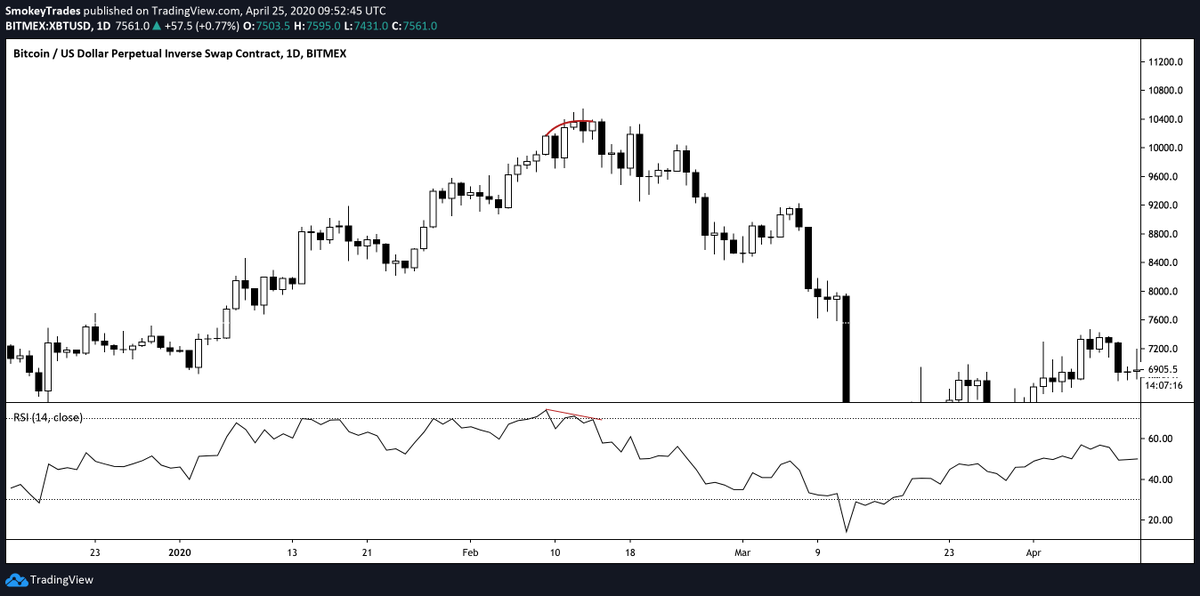1) Small lesson on bearish divergences:
Strong divergence: Price making higher highs, oscillator makes lower highs. Momentum is slowing down even though prices are still rising well, shows potential exhaustion that can lead to a reversal
Strong divergence: Price making higher highs, oscillator makes lower highs. Momentum is slowing down even though prices are still rising well, shows potential exhaustion that can lead to a reversal
2)
Weak divergence: Following a strong move, price is now consolidating. Barely higher highs, but the oscillator shows a bearish divergence, right? Well, based on how most oscillators are calculated this will basically always happen. Of course Momentum is falling ->
Weak divergence: Following a strong move, price is now consolidating. Barely higher highs, but the oscillator shows a bearish divergence, right? Well, based on how most oscillators are calculated this will basically always happen. Of course Momentum is falling ->
3) during a consolidation after such a strong move. That is to be expected. This doesn& #39;t mean that price will dump. Oscillators measure relative momentum, and a ranging environment will never have as much momentum as a strong breakout (duh?)
4) Don& #39;t immediately rush into trend fading positions in a consolidation just because the oscillator is slowly resetting. That& #39;s normal, in fact it& #39;d be unusual if this wasn& #39;t happening.
5) By the way, this counts for bullish divergences too. I just happened to use bearish divs as an example since we‘re currently in a situation where this thread is relevant.

 Read on Twitter
Read on Twitter



